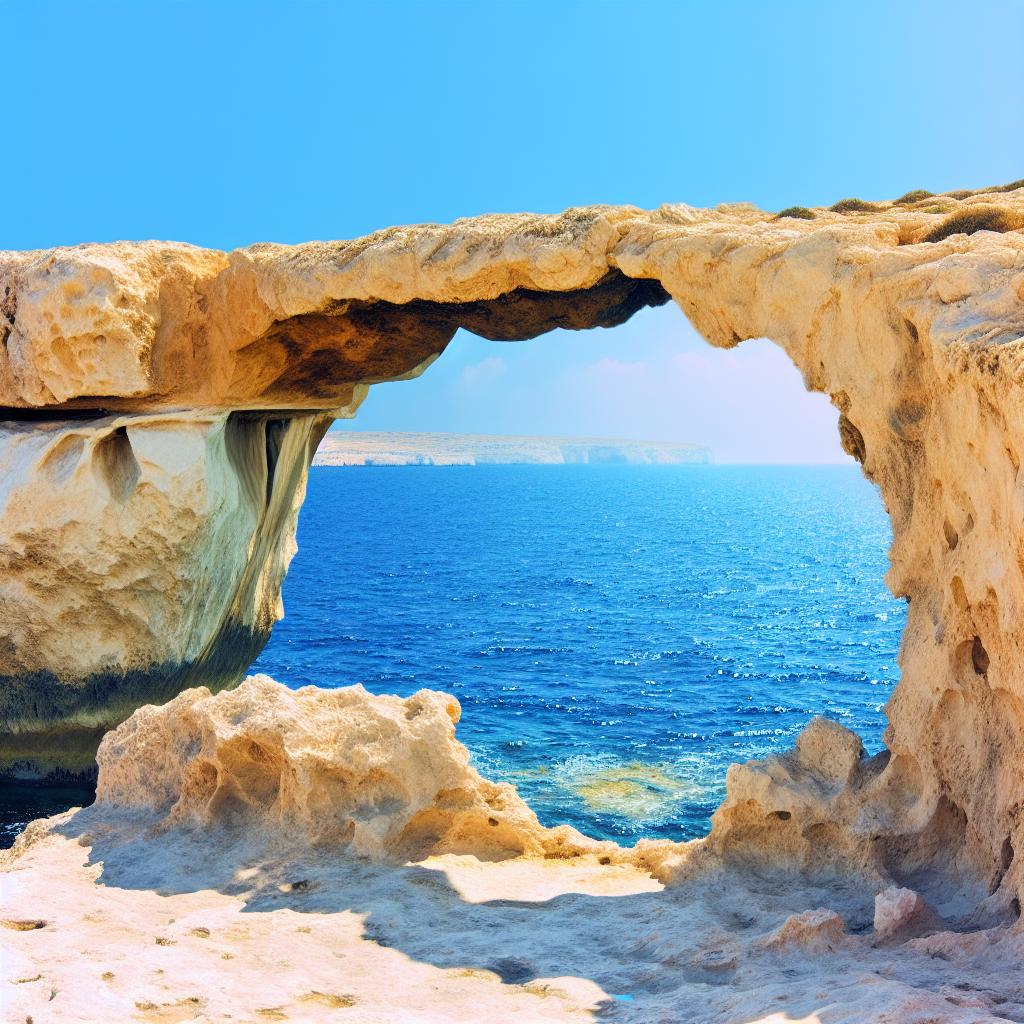Introduction
The Wied il-Mielaħ Window is a stunning natural limestone arch located on the scenic north-western coast of Gozo, Malta’s second largest island. This remarkable geological feature provides visitors with an intriguing alternative to the more famous, but now collapsed, Azure Window, which was also once a significant landmark on the same island. Renowned for its splendid coastal vistas and geological significance, the Wied il-Mielaħ Window attracts tourists and nature enthusiasts alike.
Geological Formation
The Wied il-Mielaħ Window owes its existence to the fascinating geological processes that have occurred over millions of years. It is primarily formed from sedimentary rock, with limestone being its main constituent. Over time, the continuous action of natural forces such as wind and water erosion has meticulously sculpted this extraordinary arch. Rainfall, wave action, and strong prevailing winds have contributed to the gradual shaping of the limestone, forming the arch that stands today as a testament to nature’s artistry. These ongoing natural processes continue to mold the landscape, providing valuable insights into the area’s geological history and how such awe-inspiring features come to be.
Location and Accessibility
Located near the charming village of Għarb, the Wied il-Mielaħ Window boasts reasonable accessibility for visitors. For those traveling by car, there are well-marked roads that lead up to the site, offering convenient access. Alternatively, for those who prefer a more immersive experience, it is possible to reach the arch on foot. There are designated pathways that guide visitors to scenic viewpoints, providing panoramic views of the arch and the captivating surrounding coastline. Nature lovers and hiking enthusiasts will find this area particularly appealing, as a trip to the arch can be combined with explorations of other natural attractions found throughout Gozo.
Flora and Fauna
The environment surrounding the Wied il-Mielaħ Window is characterized by the diverse and resilient vegetation typical of the Mediterranean region. The rugged terrain hosts a variety of plant species that have adapted to thrive in the challenging coastal conditions. These include hardy shrubs and aromatic herbs that contribute to the area’s rich biodiversity. Birdwatchers will be delighted to spot a range of seabird species that frequent this part of the Mediterranean. These feathered residents make the area a prime location for those interested in ornithology, offering a glimpse into the delicate ecosystems that exist along the coast.
Conservation Efforts
The conservation of natural sites like the Wied il-Mielaħ Window is crucial to ensure that their beauty and ecological significance endure for future generations. Apart from being remarkable geological formations, these sites serve as vital habitats for a multitude of plant and animal species. Recognizing their importance, local authorities, along with environmental organizations, actively work to monitor and manage the human impact on these delicate environments. Efforts are made to strike a balance between promoting tourism and ensuring the preservation of the natural habitat. Through responsible management and sustainable tourism practices, it is possible to protect these treasures while allowing people to enjoy their splendor.
For further details about visiting Gozo and exploring its myriad attractions, you may refer to dedicated travel guides or visit the official Gozo tourism website at Visit Gozo. The website offers comprehensive information about the island and its numerous natural wonders.

